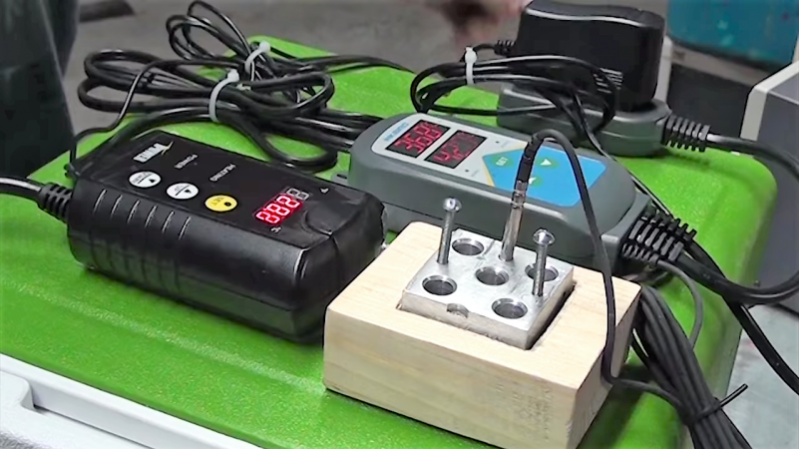[Justin] from The Thought Emporium takes on a common molecular biology problem with these homebrew heating instruments for the DIY biology lab.
The action at the molecular biology bench boils down to a few simple tasks: suck stuff, spit stuff, cool stuff, and heat stuff. Pipettes take care of the sucking and spitting, while ice buckets and refrigerators do the cooling. The heating, however, can be problematic; vessels of various sizes need to be accommodated at different, carefully controlled temperatures. It’s not uncommon to see dozens of different incubators, heat blocks, heat plates, and even walk-in environmental chambers in the typical lab, all acquired and maintained at great cost. It’s enough to discourage any would-be biohacker from starting a lab.
[Justin] knew It doesn’t need to be that way, though. So he tackled two common devices: the incubator and the heating block. The build used as many off-the-shelf components as possible, keeping costs down. The incubator is dead simple: an insulated plastic picnic cooler with a thermostatically controlled reptile heating pad. That proves to be more than serviceable up to 40°, at the high end of what most yeast and bacterial cultures require.
The heat block, used to heat small plastic reaction vessels called Eppendorf tubes, was a little more complicated to construct. Scrap heat sinks yielded aluminum stock, which despite going through a bit of a machinist’s nightmare on the drill press came out surprisingly nice. Heat for the block is provided by a commercial Peltier module and controller; it looks good up to 42°, a common temperature for heat-shocking yeast and tricking them into taking up foreign DNA.
We’re impressed with how cheaply [Justin] was able to throw together these instruments, and we’re looking forward to seeing how he utilizes them. He’s already biohacked himself, so seeing what happens to yeast and bacteria in his DIY lab should be interesting.

















Lizards get to have full time heat, us humans in the US have to contend with 2 hours out of a heating pad 10 hours out of a electric blanket. I figured what pin on the chip to unground and liberate one heating pad for unrestricted use. Where is Trump when you need him.
I think you should put thermal paste in the temperature sensor to get more accurate readings. Putting In the peltier it would be nice too.
+++ for the Peltier element.
They can achieve a temperature range wider than necessary for all molecular biology experiments, can both cool and heat just by reversing polarity, have a form factor that is very easy to use (flat, rectangular), and can be used in arrays for individual temperature control. sandwich them between a large heatsink + fan and a CNC machined sample holder (not forgetting thermal paste), mill a slot for a PT1000 temperature sensor in the sample holder, and Bob´s your uncle.
Eppendorf make a variety of different sized tubes and containers. What he’s using are microcentrifuge tubes. Which are made by many companies, eppendorf just happen to be a popular one.